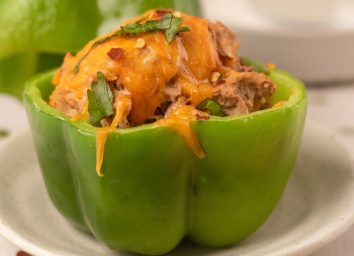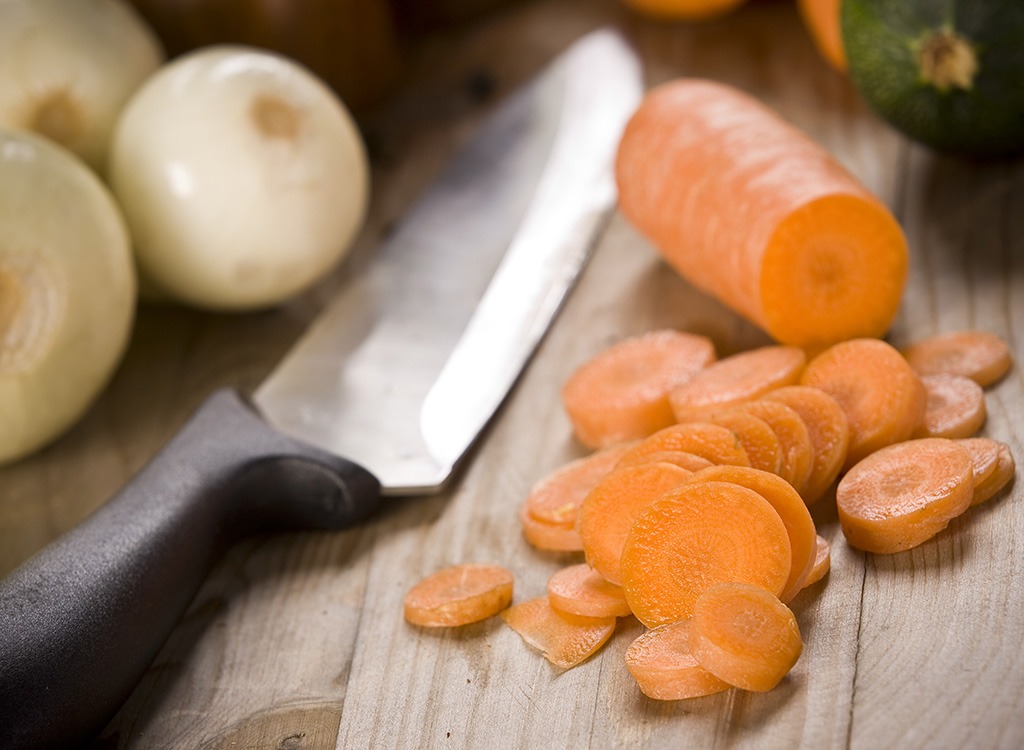
Think the remnants of your dinner belong in the trash? Think again! There are loads of ways to make the most of scraps as well as almost-spoiled food.
Hi, my name is Stephanie and I love spinning, healthy cooking, and coffee. I also despise condiments sold in glass jars—so much so, in fact, that I refuse to buy them. You may scoff at this seemingly random personality quirk, but there's only so many times I can slam my palm into the back of a ketchup bottle before I feel defeated and wind up tossing it half-full into the trash. Not only is this far from eco-friendly, dumping food scraps is a financial squander—and this holds true for more than just dressings and sauces.
Over time, however, I've learned that with a bit of creativity, your scraps don't have to go to waste. Whether they help infuse vitamins into soup or beef up your dinner, stray marshmallows, greens scraps, leftover spices, and even avocado pits all have uses beyond filling the trash bin. So put down the Glad bag, wheel away the compost bin, and try some of these delicious hacks for food scraps! Looking for additional ways to salvage your meal prep extras? Don't miss these 15 Ideas for Leftover Quinoa.
Freeze Extra Yogurt For Smoothies
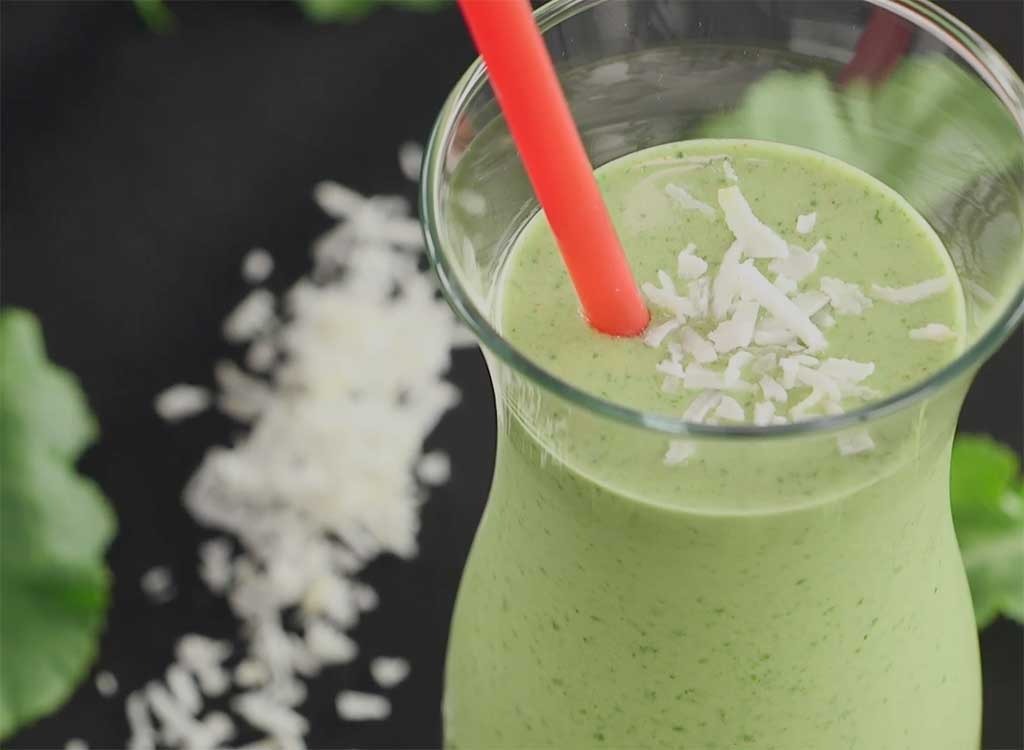
Recently bought a big tub of yogurt you don't anticipate finishing before it goes bad? Even if you're a stickler for dates, there's no need to pass on the probiotics. Instead of tossing out the "scraps" in that tub of yogurt, repurpose them. "Freeze unsweetened, plain, fat-free Greek yogurt in an ice cube tray and use it in your daily smoothies," advises Heather McClees, a certified nutritionist and holistic health coach. This way, you'll not only eliminate waste but also have an easy way to add immune-boosting, healthy gut bacteria to your morning meal."
Repurpose Veggie Cooking Water For Soup
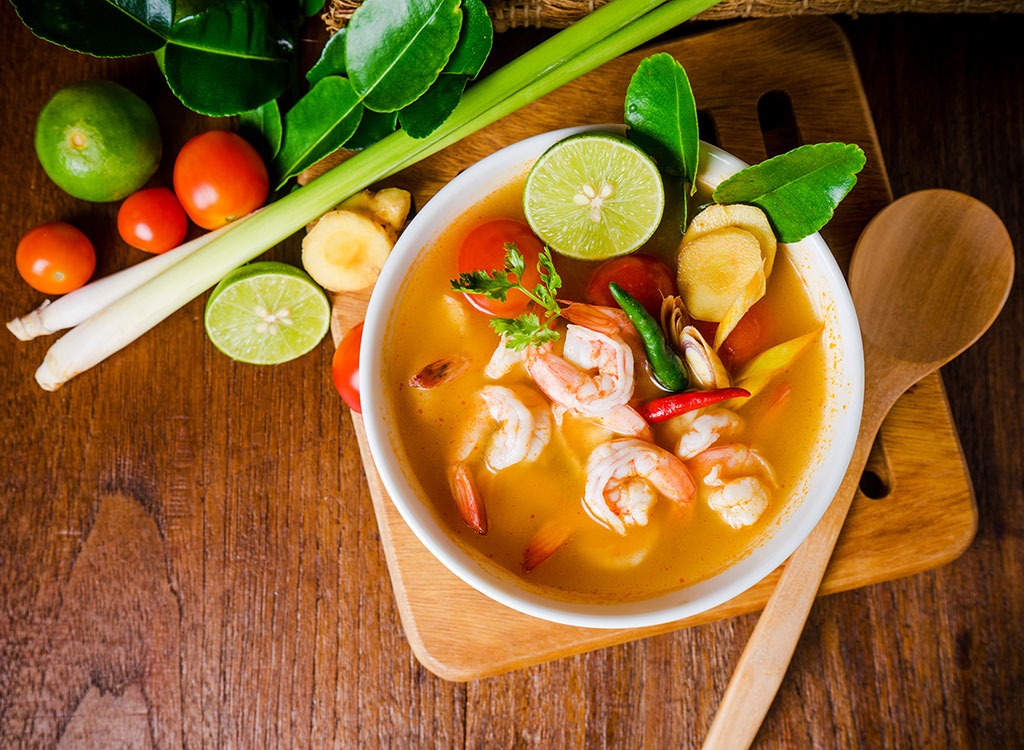
Next time you're boiling broccoli, potatoes, or green beans, don't pour the leftover water down the drain. "After you're done cooking your veggies, use the cooking water as the base for your next soup," McClees suggests. "It's free, much healthier than store bought vegetable stock, and has no added sodium." When veggies cook in water, their flavor and nutrients leach into the water so it's full of vitamins, especially vitamins B and C, since they're water-soluble. Not a soup fan? Leftover cooking water is also a great way to sauté your next meal of chicken or fish without any added oil.
Reuse The Pit To Keep
Guacamole Green
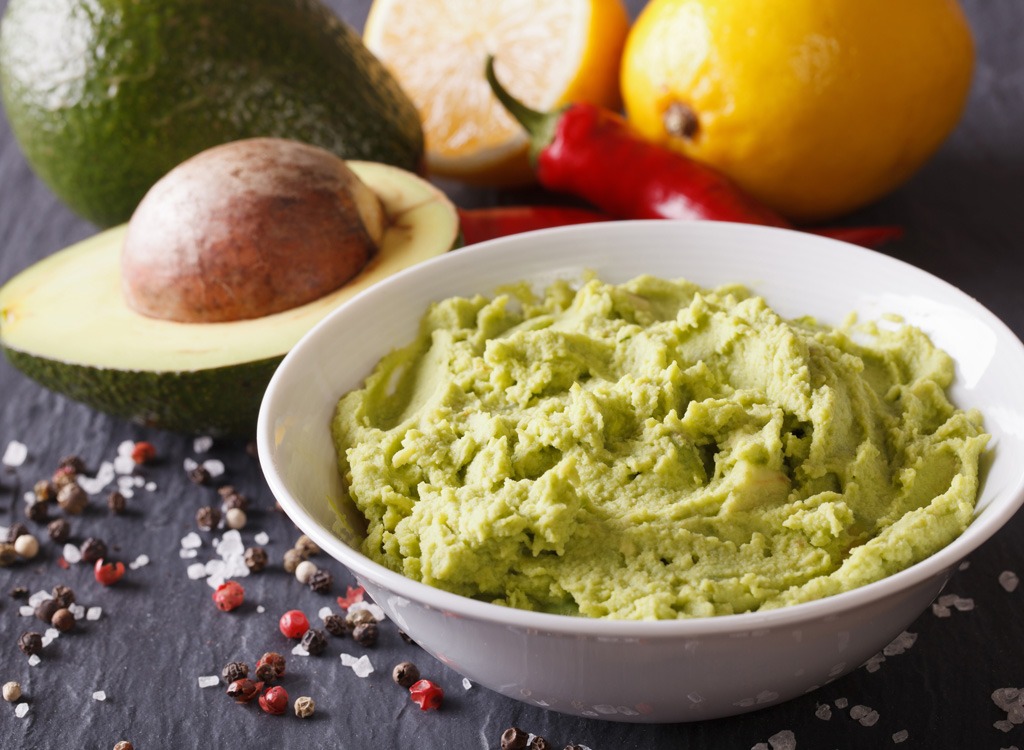
Keep your guac green with a little help from the oft-overlooked avocado pit. "Instead of throwing it out, store the avocado pit in a jar with the guacamole," Greutman says. "It will keep it from turning brown, and can even help store-bought varieties maintain their color longer." Big fan of all things Tex-Mex? Don't miss these 20 Healthy Mexican Recipes!
Use Marshmallows to Keep Brown Sugar Soft
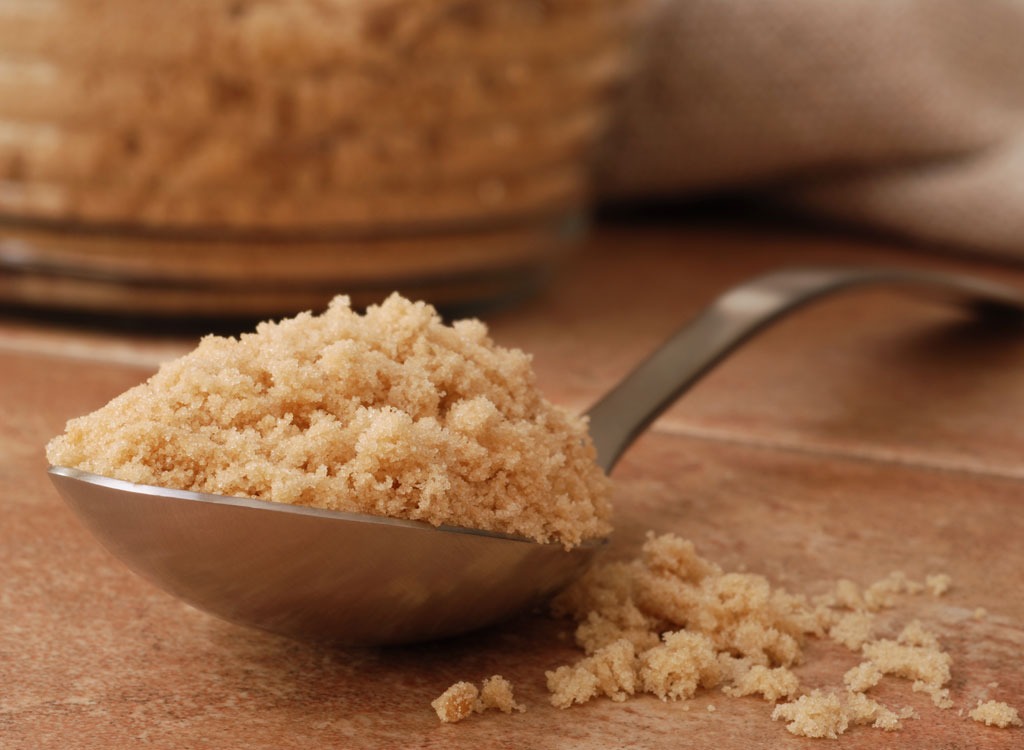
Whether you have leftover marshmallows from summer s'mores or your Thanksgiving sweet potato pie, there's no reason to let them go to waste. Skip the terra cotta brown bear and use a handful of them to keep brown sugar soft. Layer them on top of the sweet brown stuff in a sealed bag or airtight container to prevent the remaining sugar from turning rock hard.
Reuse Pickle Juice
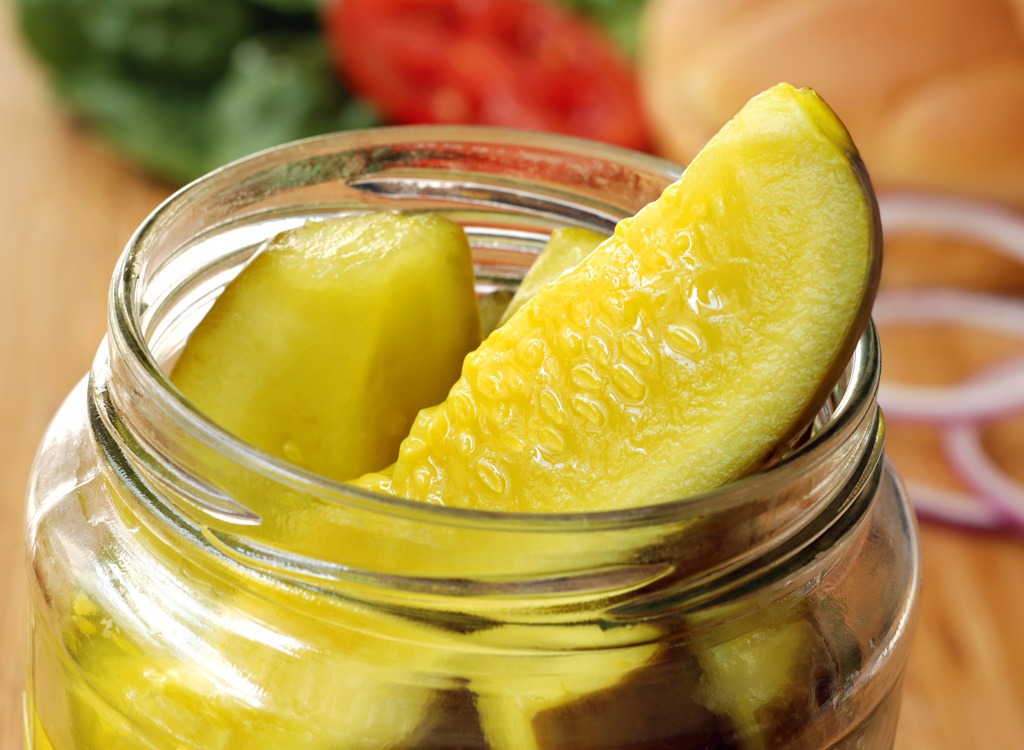
After you've finished that jar of kosher pickles, keep the brine. The juice will help you restart the pickling process so you can make some vinegar-spiked veggies from scratch. To make it happen, slice a cucumber, place it in the leftover pickle juice and refrigerate the jar for a few days. That's it! Feeling adventurous? Step out of the box by pickling and preserving green beans, carrots, or radishes, which happen to be one of these 17 of The Most Hydrating Foods.
Regrow Lettuce With The Nub
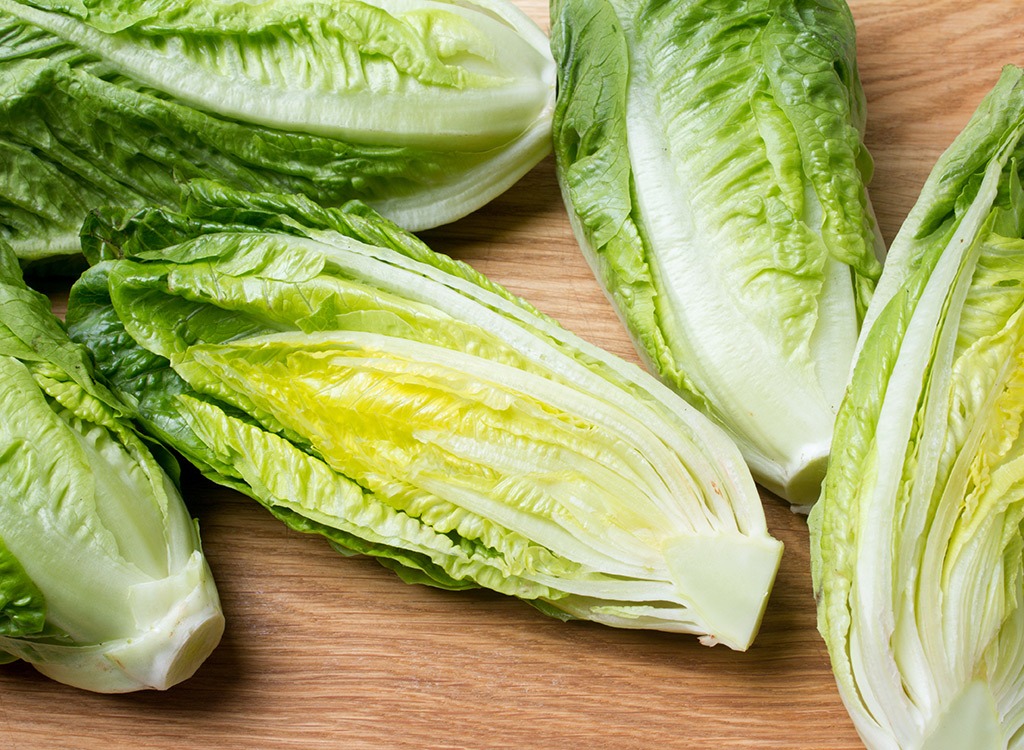
All good things come from the heart, and lettuce is no exception. Next time you buy romaine, hold onto the core, or the "heart", and place it in about a half-inch of water. Expose it to sunlight, change the water daily, and prepare to harvest your new leaves in a few weeks. "You can re-grow green onion, too, by cutting off the root end (leaving just an inch or two to grow) and placing it in water," says Carrie Havranek, culinary instructor and food writer and editor at The Dharma Kitchen. "Ditto for carrots, lettuce, and celery."
Create Compound Butter
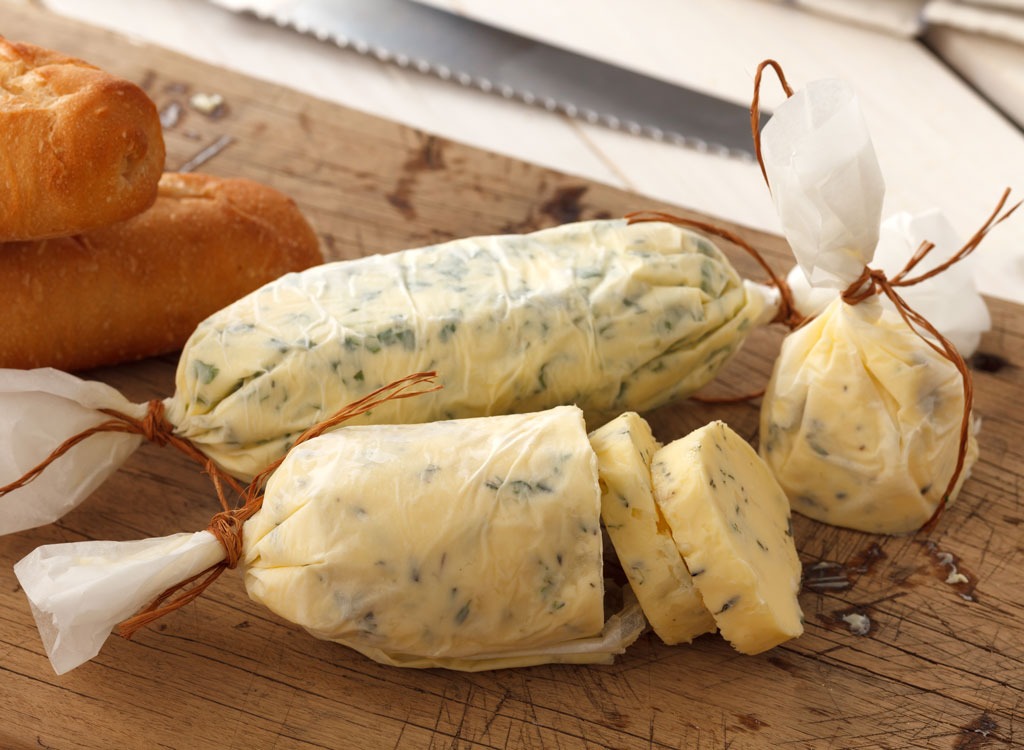
With the season of feasting upon us, one thing's for sure: You can never have enough butter. This year, add some flavor to your spread with leftover herbs. "Bring quality, grass-fed or organic butter to room temperature so that it's soft," Havranek says. "Then, take leftover parsley, sage, rosemary, or thyme, and chop it finely. Combine the butter and herbs until they're completely incorporated. Scrape it out onto a sheet of wax paper and roll into a cylindrical shape. Keep the compound butter for up to three months in the freezer, rewrapping as needed."
Squeeze More Out Of Salad Dressing
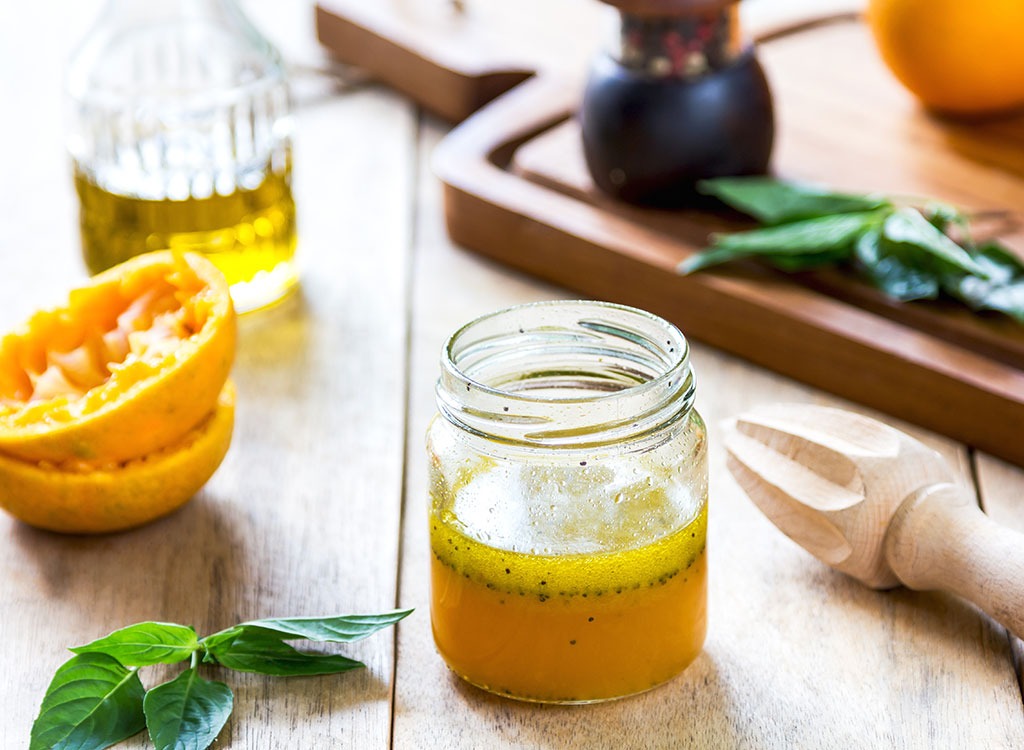
A few squeezes of ranch dressing can be enough to dress and entire salad. But sometimes, those last few spoonfuls can be tough to get out of the bottle. "Add water, mayo, and extra spices, then shake," Greutman advises. "You'll end up with a tasty new creation." Whatever you do, though, stay away from these 16 Salad Dressings Worse Than Chocolate Syrup.
Savour the Stems
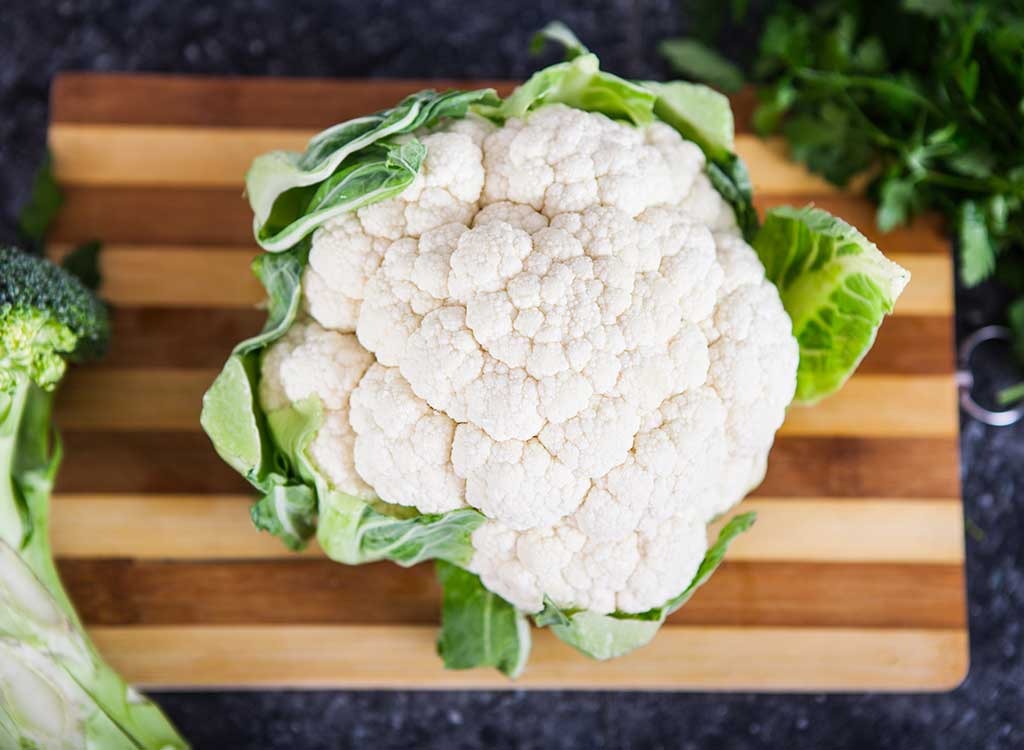
Florets may get all the glory, but veggies' shoots and leaves—which are often tossed out—deserve some attention, too. Not only are they versatile in terms of culinary uses, skins, leaves, and stalks have unique nutrients not found in other parts of the vegetables. They also have higher concentrations of vitamins than parts more commonly consumed. "You can use things like broccoli and Swiss chard stems and cauliflower leaves to make a variety of dishes," Havranek says. Her advice: Slice them thinly, and either put them on a sheet pan to roast or sauté with other root vegetables.
Add Them to a Salad
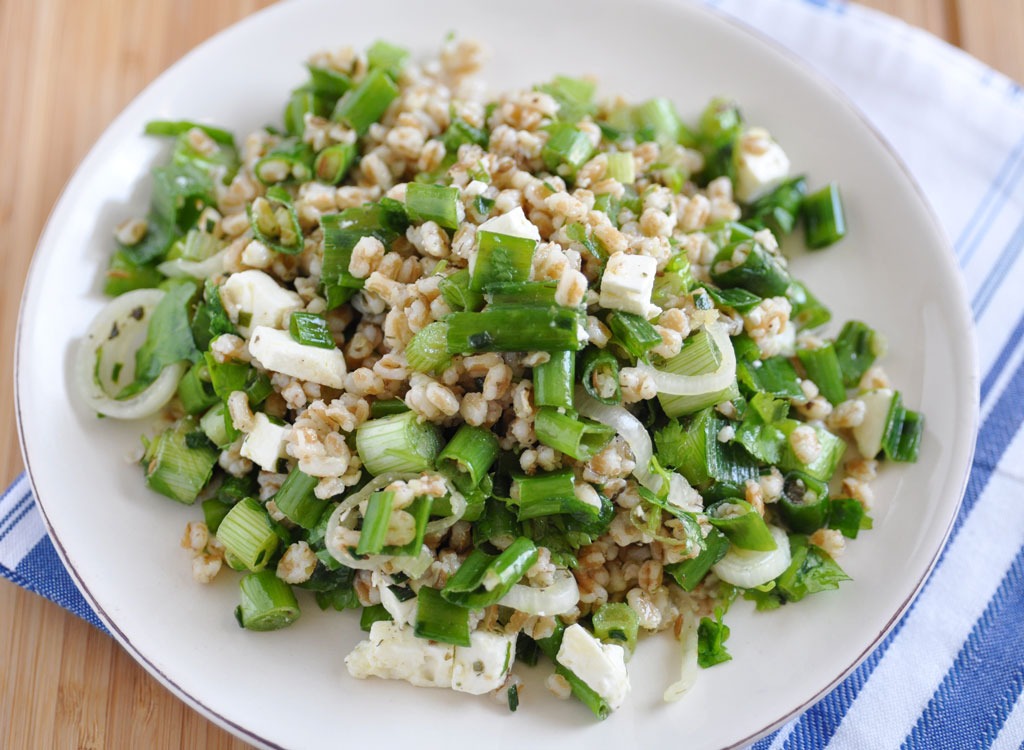
Whether you have a few spoonfuls of leftover pasta, quinoa, turkey, or chickpeas laying around, tossing the stuff into a salad is a simple and tasty way to use up odds and ends.
Craft Bone Broth From Roast Remnants

Instead of tossing them into the bin, use the bones from last night's roast to make an entirely new meal. "Place the bones into a pot, bring it to a boil, and let it simmer," says Lauren Greutman, frugal living expert and author of "The Recovering Spender." "Not only can you use it in place of store-bought beef broth, but you'll benefit from the added nutrients." When animal bones are boiled to make the broth, their collagen is broken down into gelatin and extracted into the water. While sipping may gelatin-filled water may sound a little gross, the taste and the health benefits make it worth your while. It's been shown to diminish joint and cartilage pain, boost nutrient absorption and even keep aging skin wrinkle free.
Deodorize With Coffee Grounds
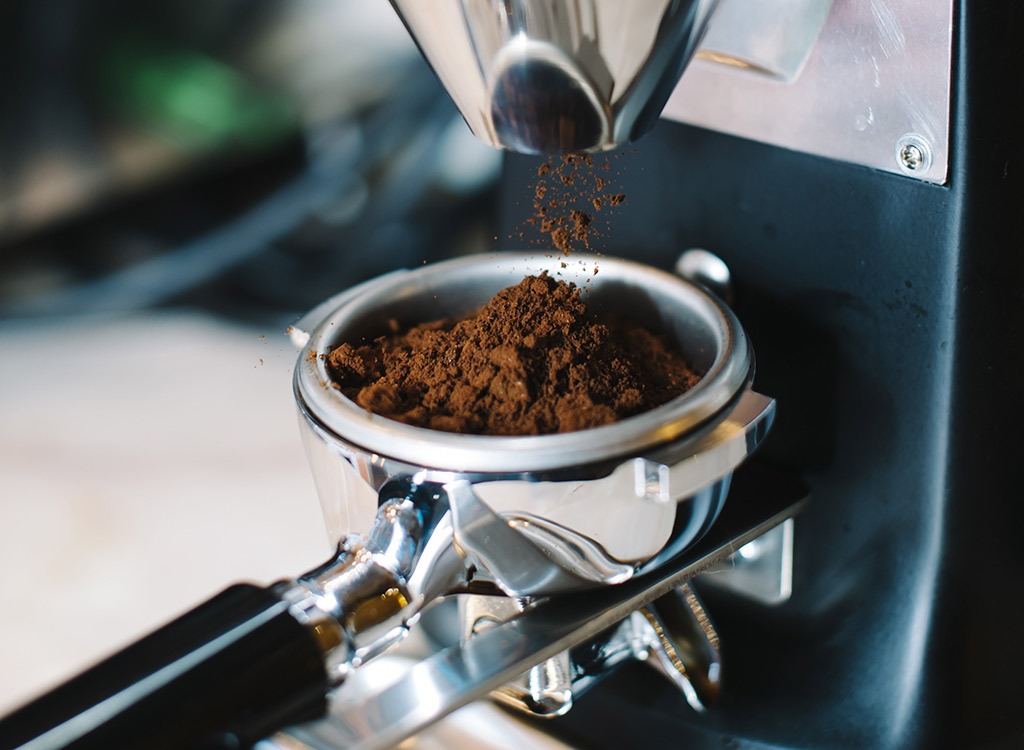
Have some leftover coffee grounds but not enough to make a full cup of Joe? Before you toss them out, take a whiff of your fridge or dumpster. If either could use some freshening up, consider using the grounds as a deodorizer. Like baking soda, coffee grounds absorb odors. Place some grounds in a bowl or some old pantyhose to make a DIY sashay that you can hang in your fridge or tie to the inside of your garbage can.
Make a Protein-Filled Rice Bowl
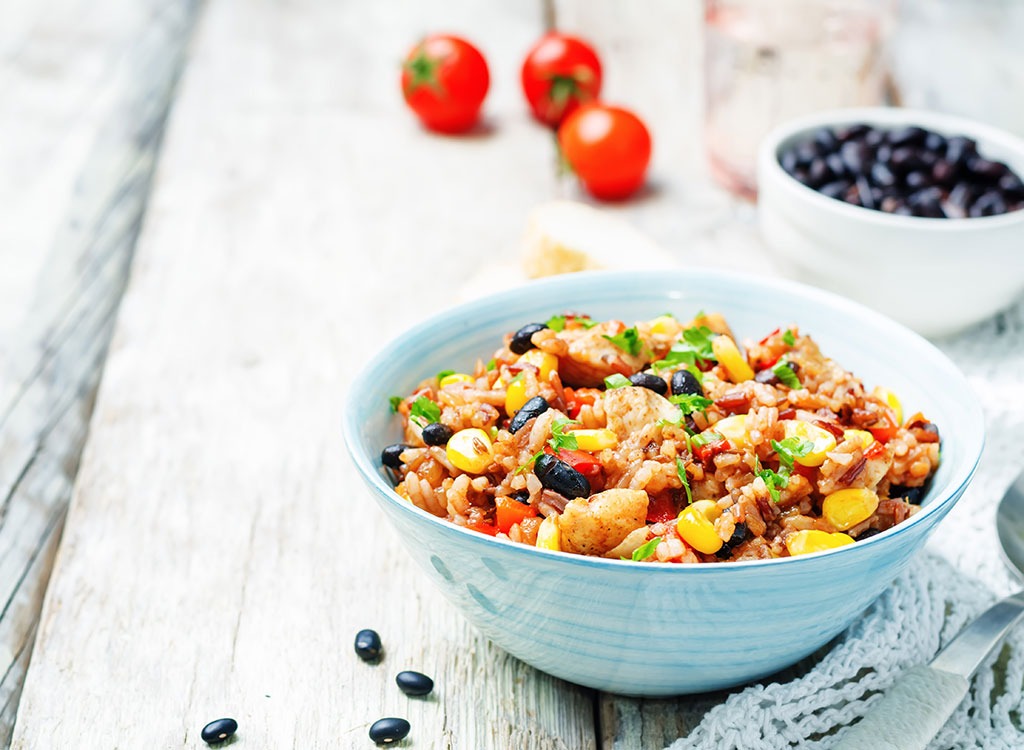
Next time you find yourself with bits of leftover chicken, beef, or turkey, make a Chipotle-style burrito bowl. Combine equal parts of cooked brown rice and drained canned black beans (two superb sources of fiber and protein) in a bowl and top with your leftover protein, chopped tomatoes and onion, and a tablespoon or two or guacamole. For more ideas for leftover poultry, don't miss these 30 Things to Make with Leftover Turkey. All of the ideas can be used for leftover chicken, too!
Freeze Spices to Keep Them Potent
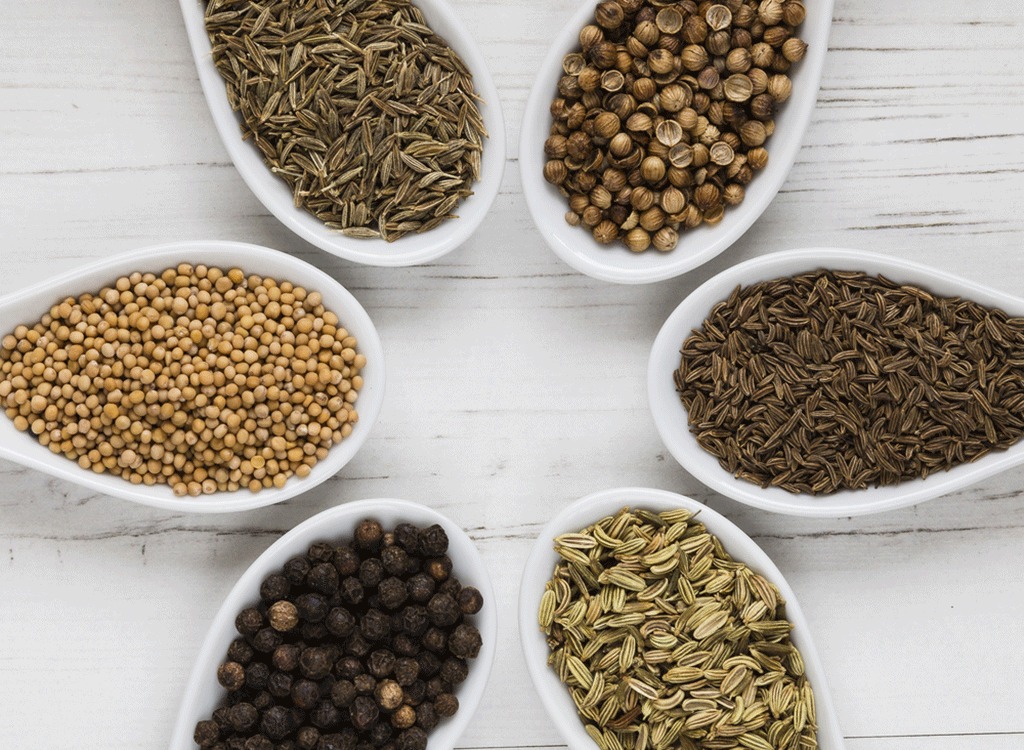
You may not notice a difference in the flavor, but it's vital that you don't let your spices get old. "Around the 6-month mark, spices start losing their potency," McClees tells us. "But instead of tossing them out when they reach this point, place them in individual baggies, put those baggies into a plastic container, and freeze them." This will help to extend their potent powers
Revitalize Crystallized Honey

Before tossing your honey bear, make sure you've made the most of its contents. Just because the crystallized bits seem like a lost cause doesn't mean they are. To bring honey back to it's smooth, drizzly state, place the jar in a bowl of hot water for 5 to 10 minutes. This will break up the crystals and allow you to get a tablespoon (or more) for your next cup of tea. Moving forward, think proactively and prevent crystals from forming by storing your honey in a cool, dry place.
Put The Freeze On Ginger

If you're not going to use the entire root, freeze the ginger and use it later. "I wrap it in wax paper or a damp towel and put it in a plastic bag," Havranek says. "When I need it I don't even wait for it to defrost; I just zest it right into the wok or stir fry." Love Asian flavors? Don't miss these 20 Healthy Chinese Foods Recipes.
Think Stock, Not Compost
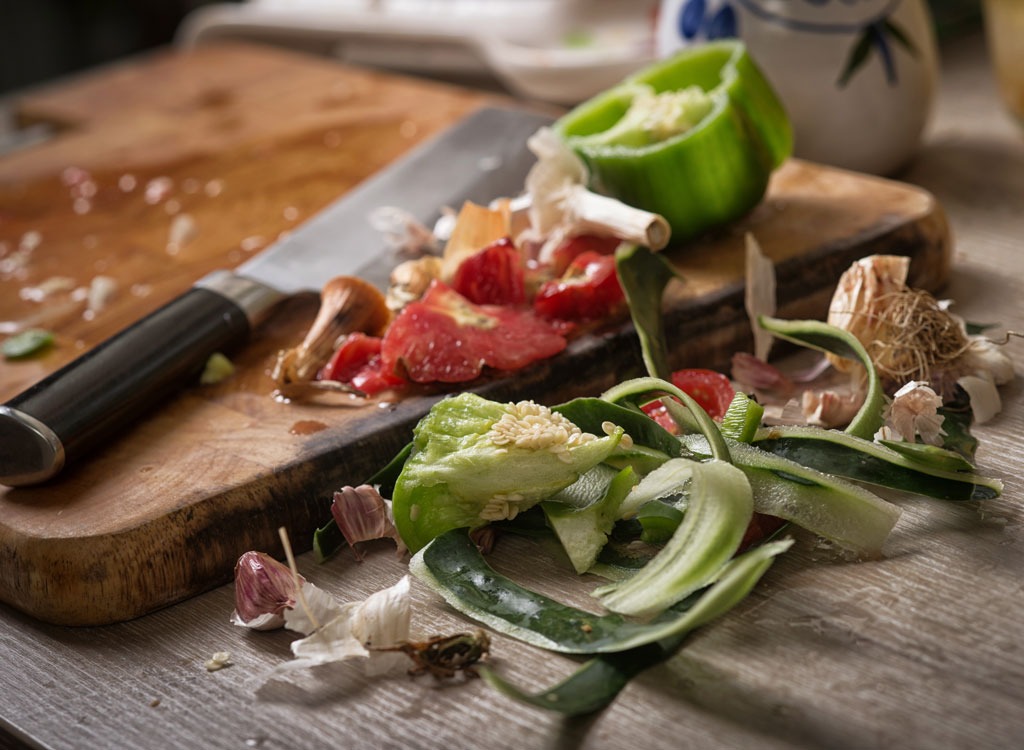
It's great to go green, but not all of your scraps have to be turned into mulch. "Rather than bring them to the compost bin, take all vegetable scraps from cooking prep and put them in a large zip-top bag in the freezer," Havranek suggests. "You can do this periodically until you develop a collection—I typically have hard tops of leeks, mushroom stems, and onion skins. Once I've gathered enough, I turn them into a stock in my crock pot."



